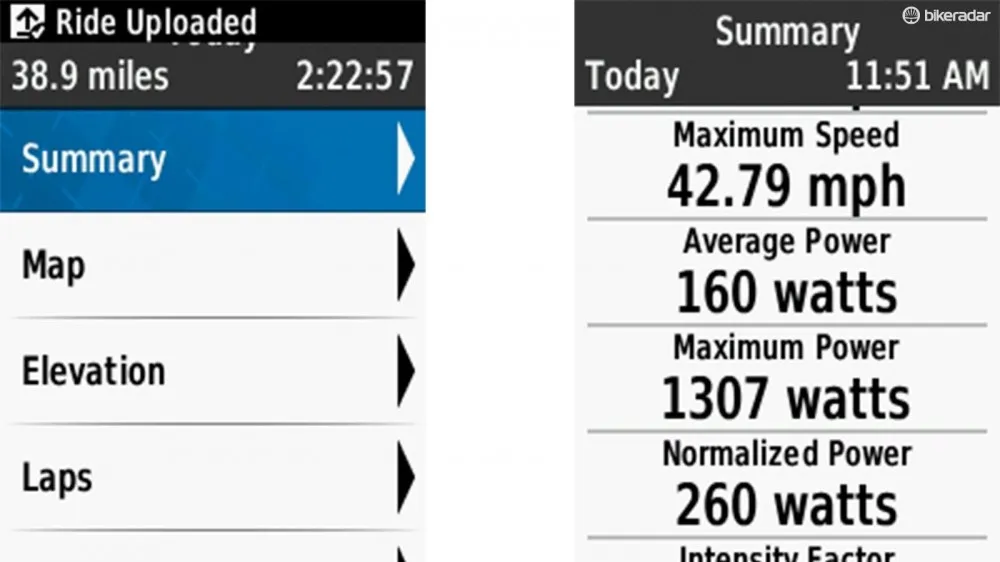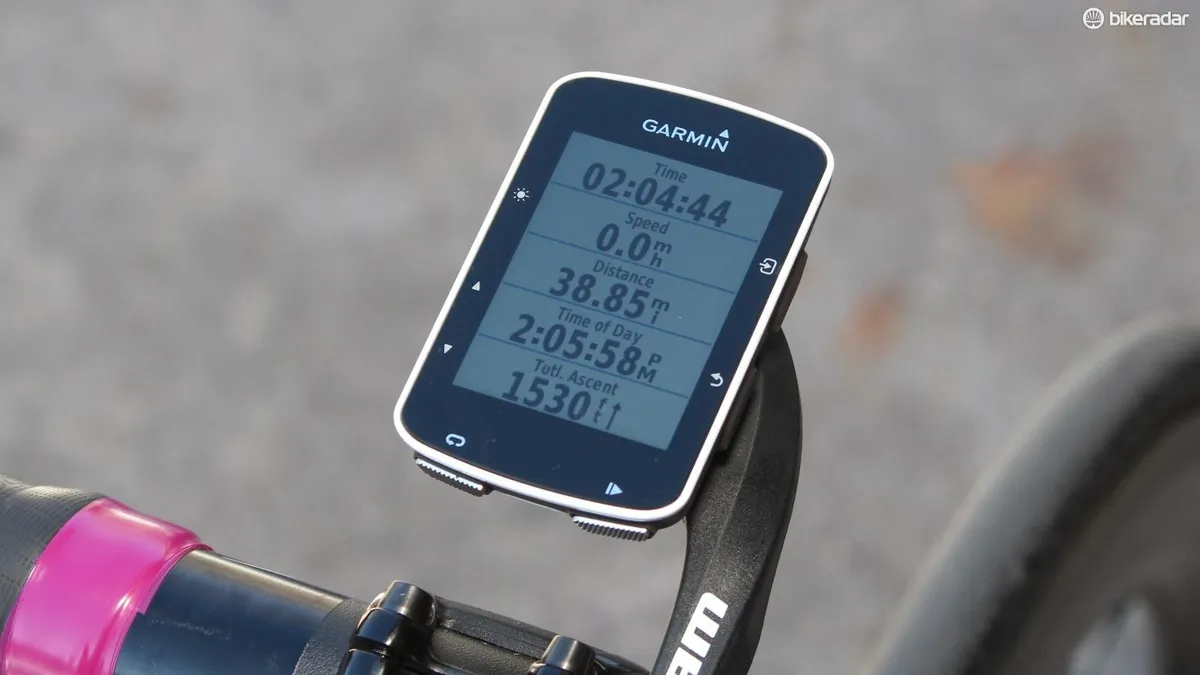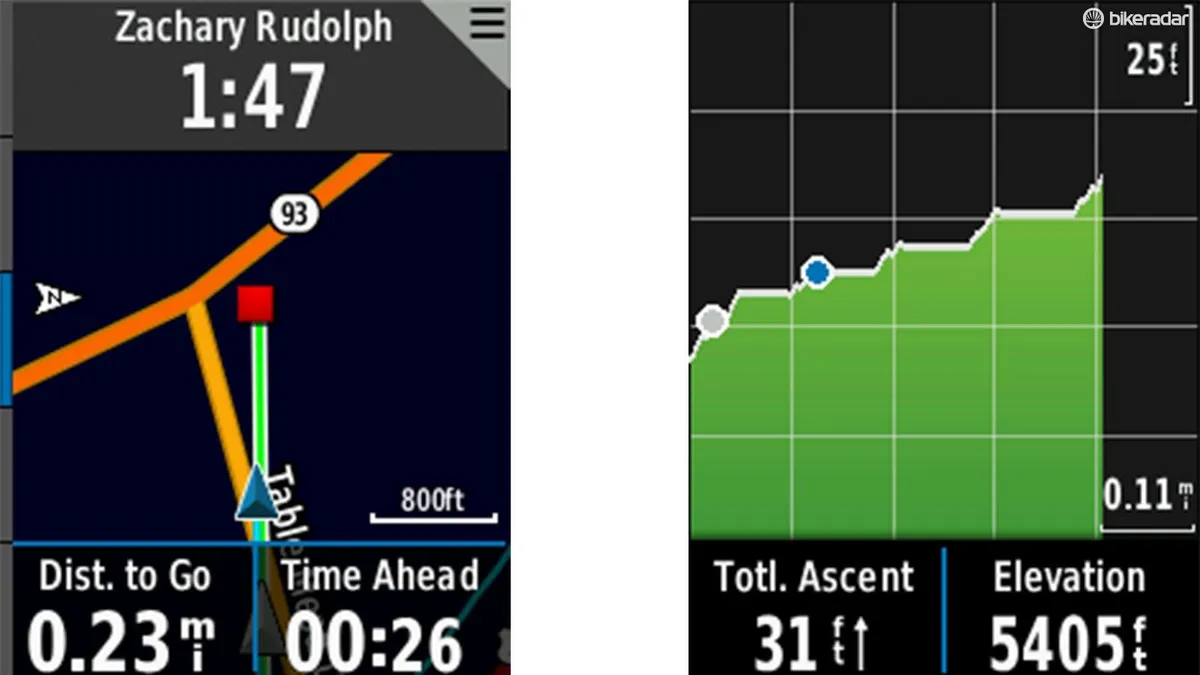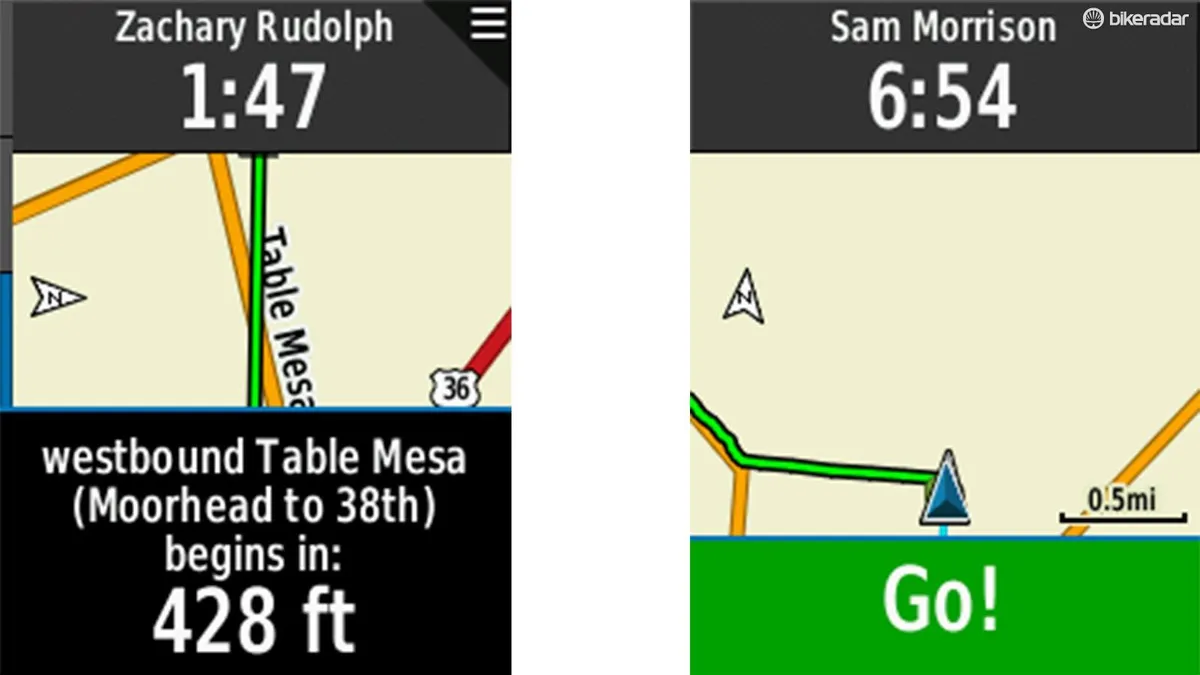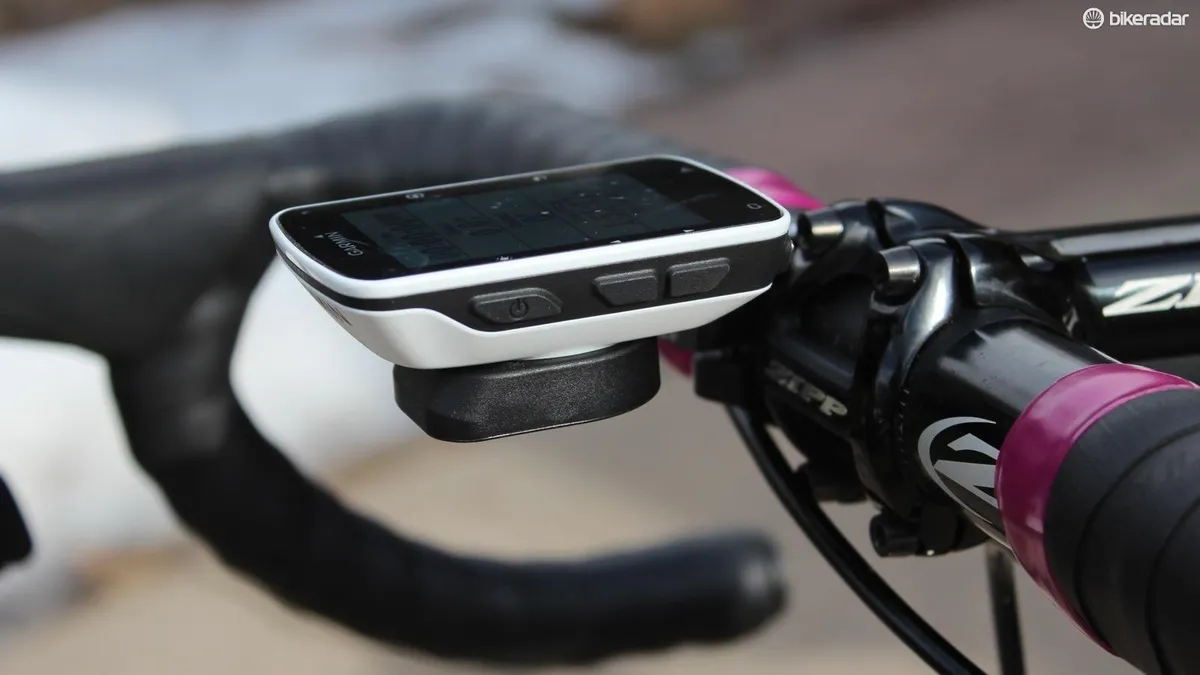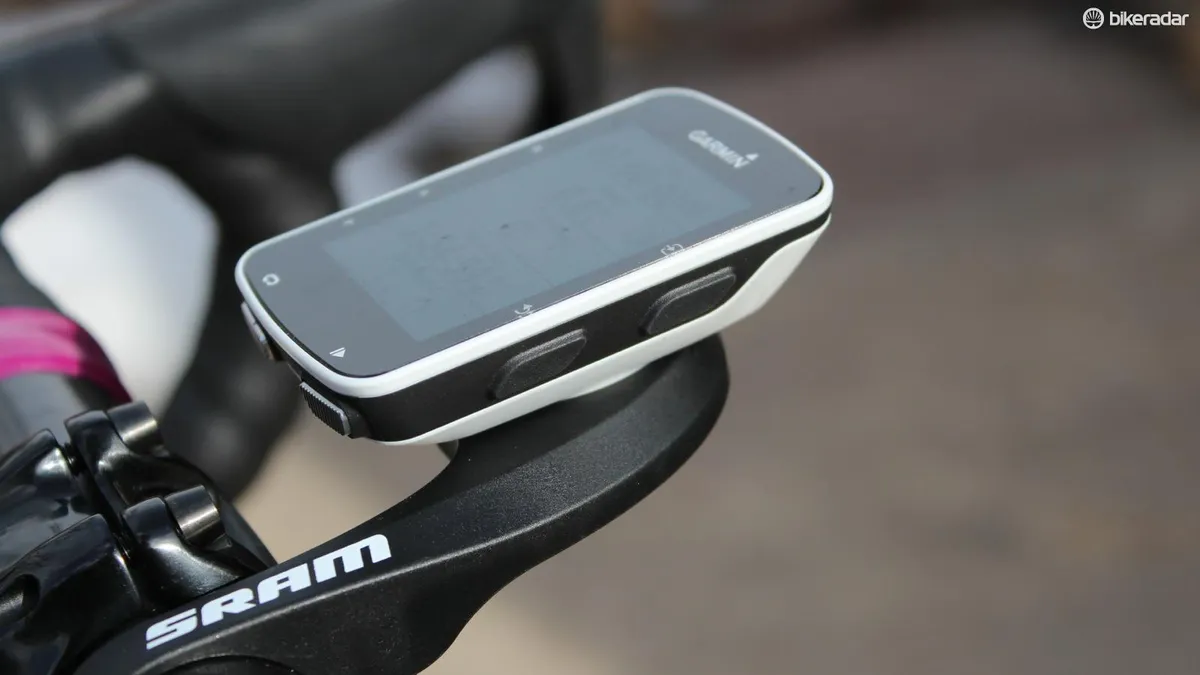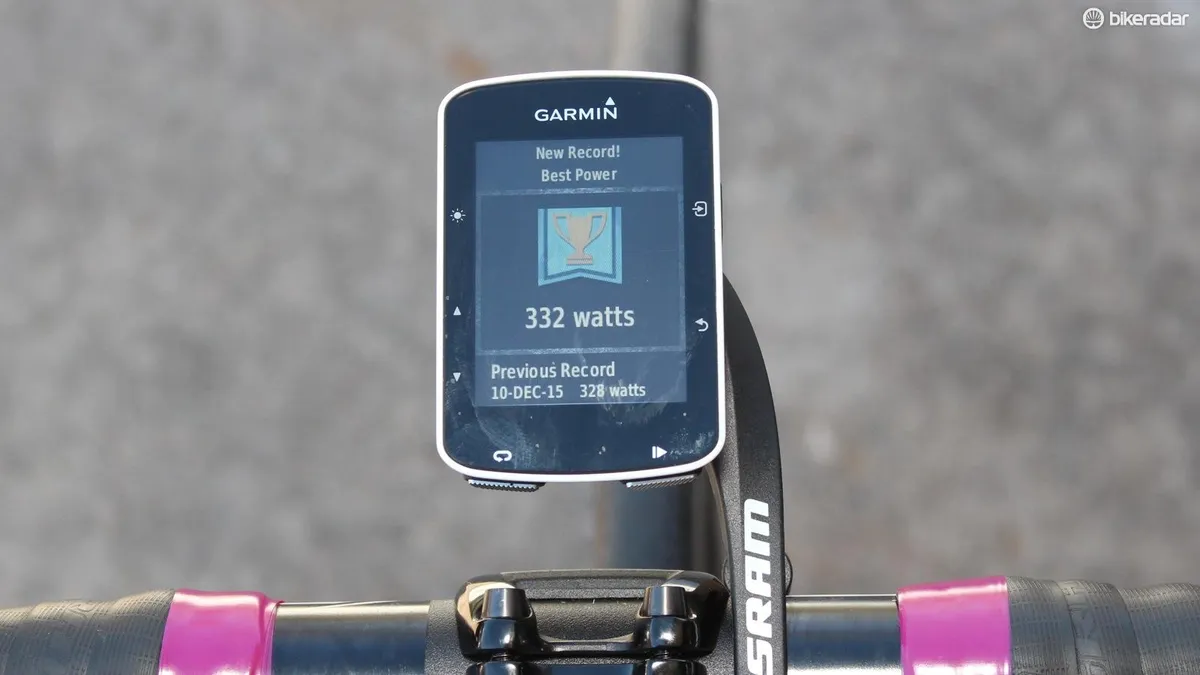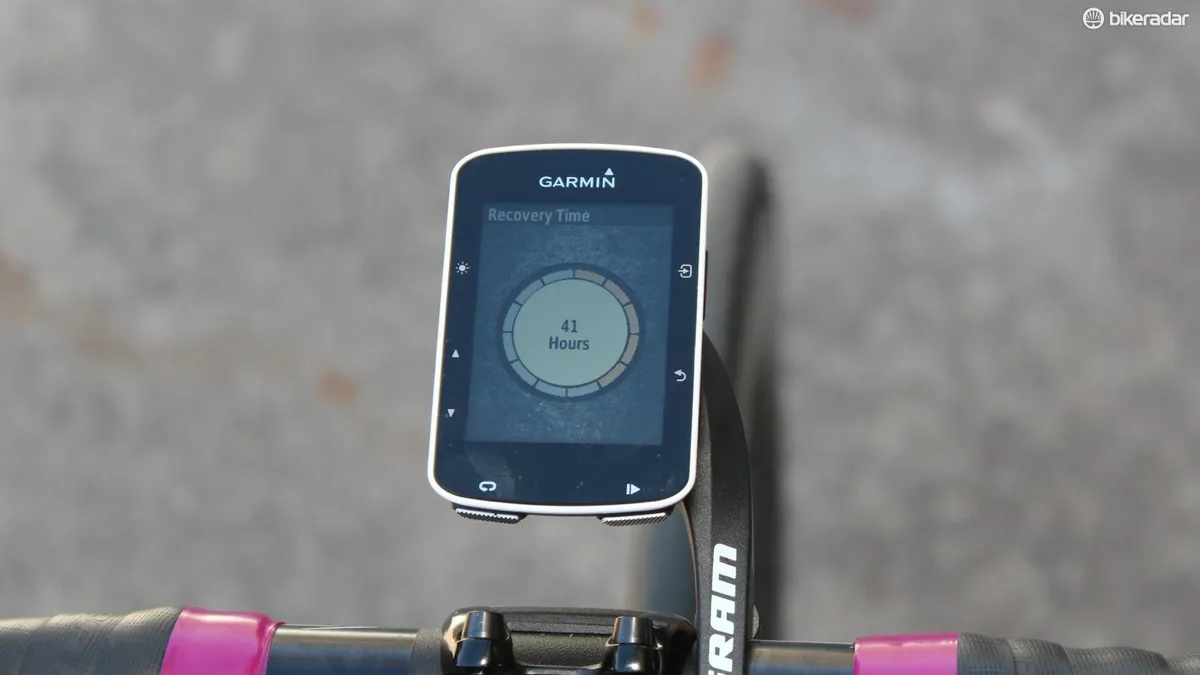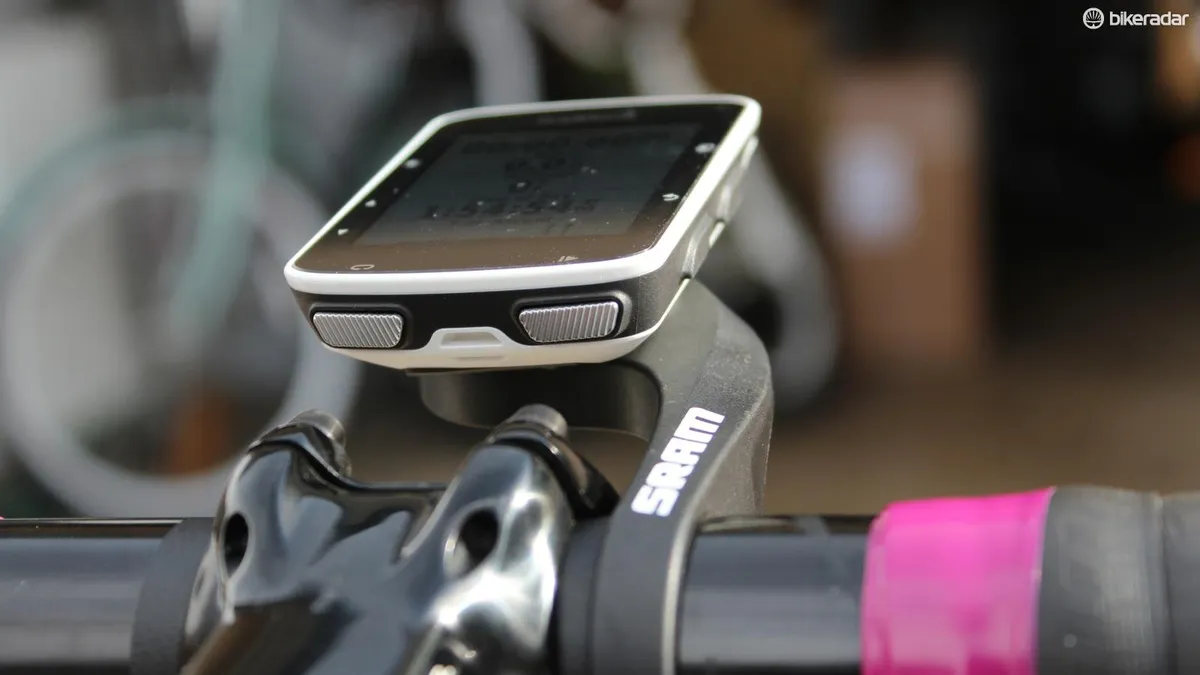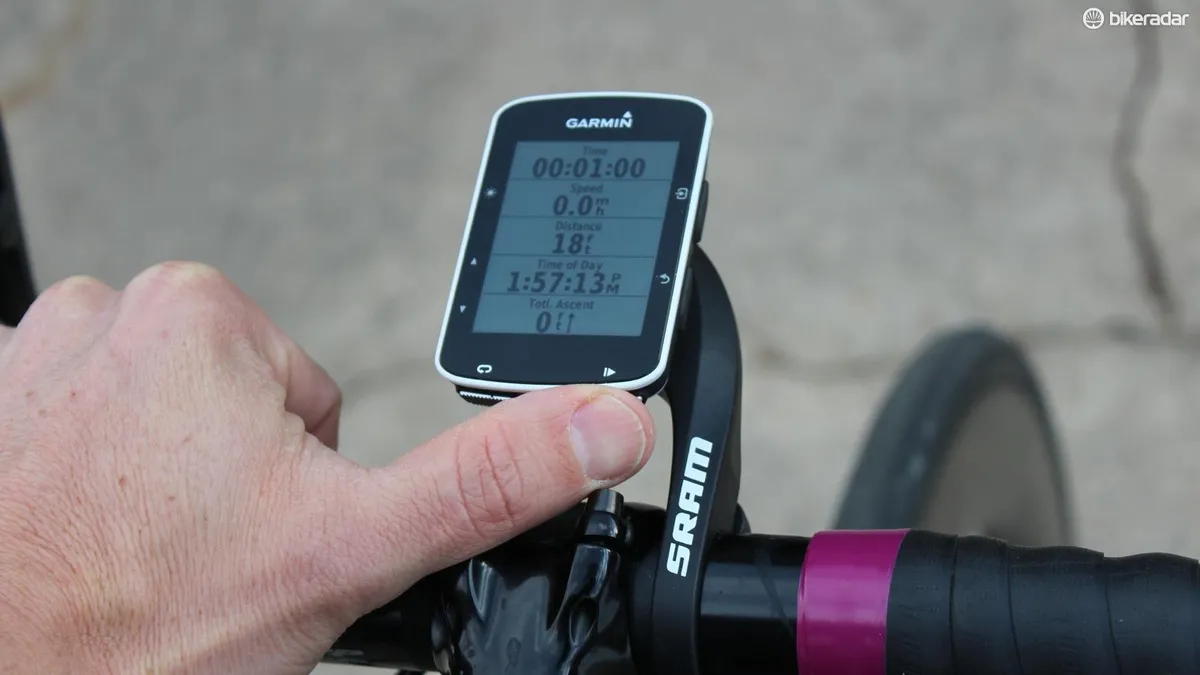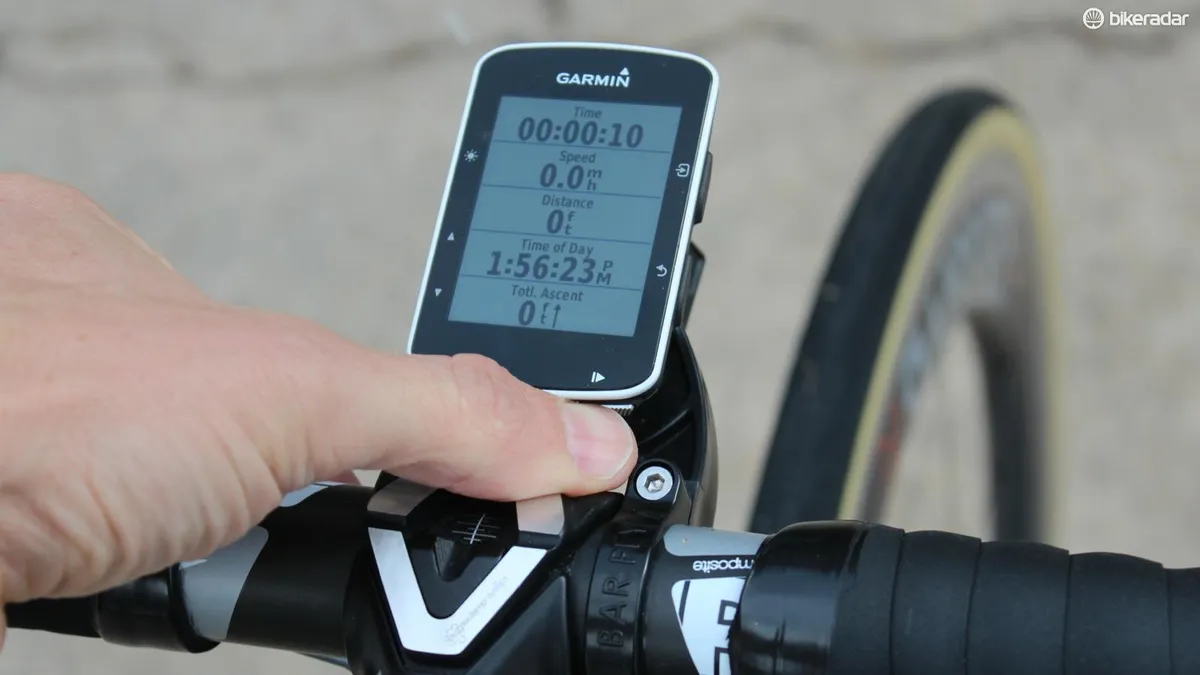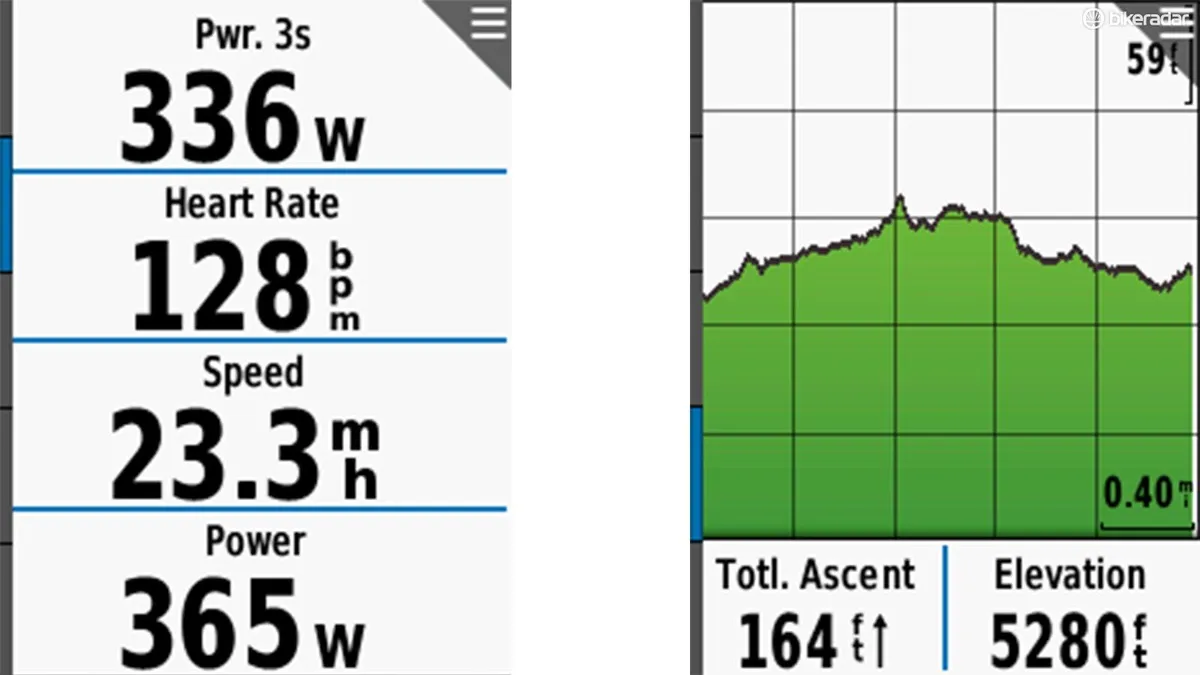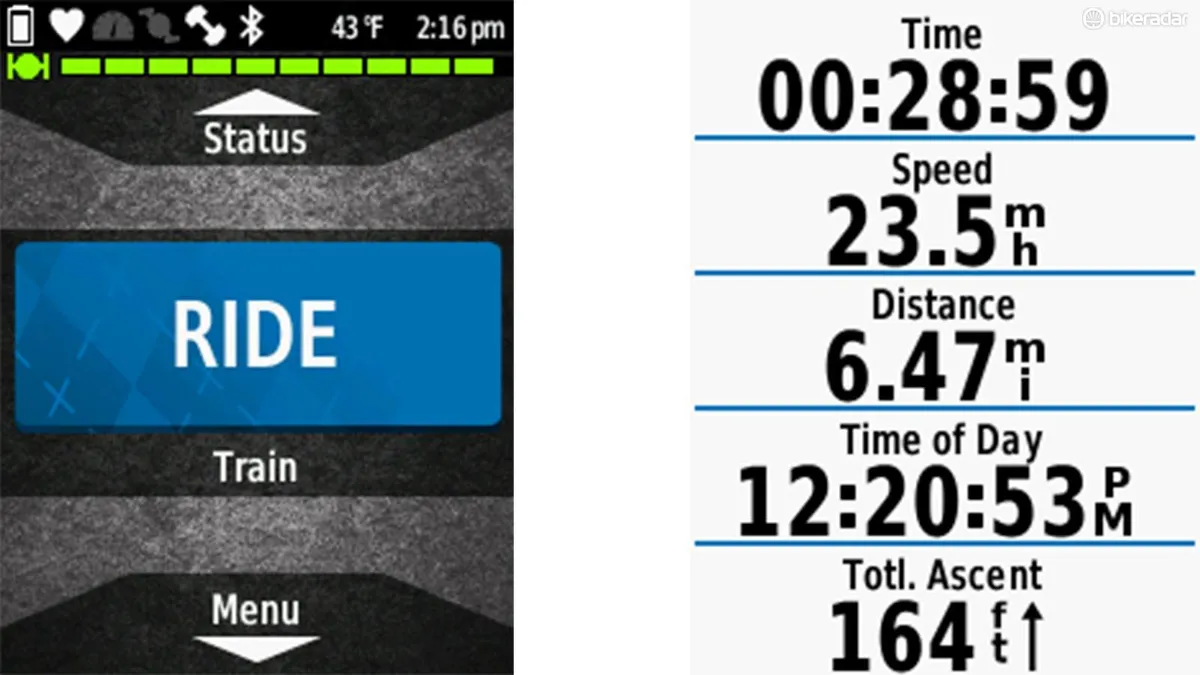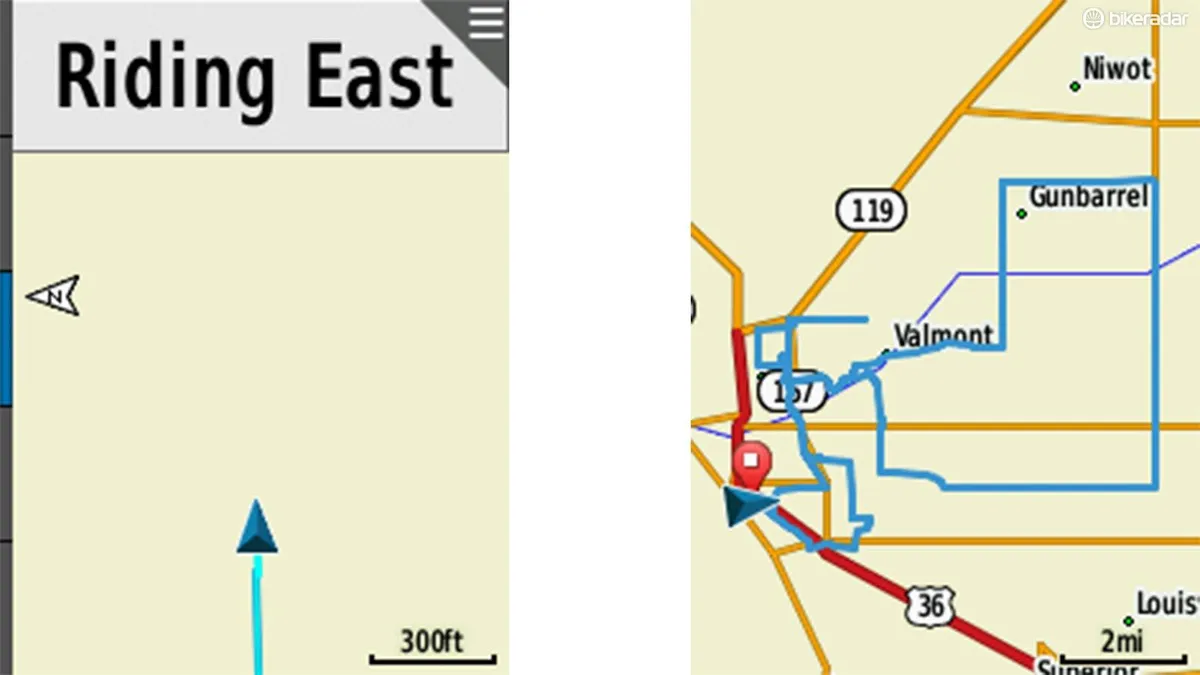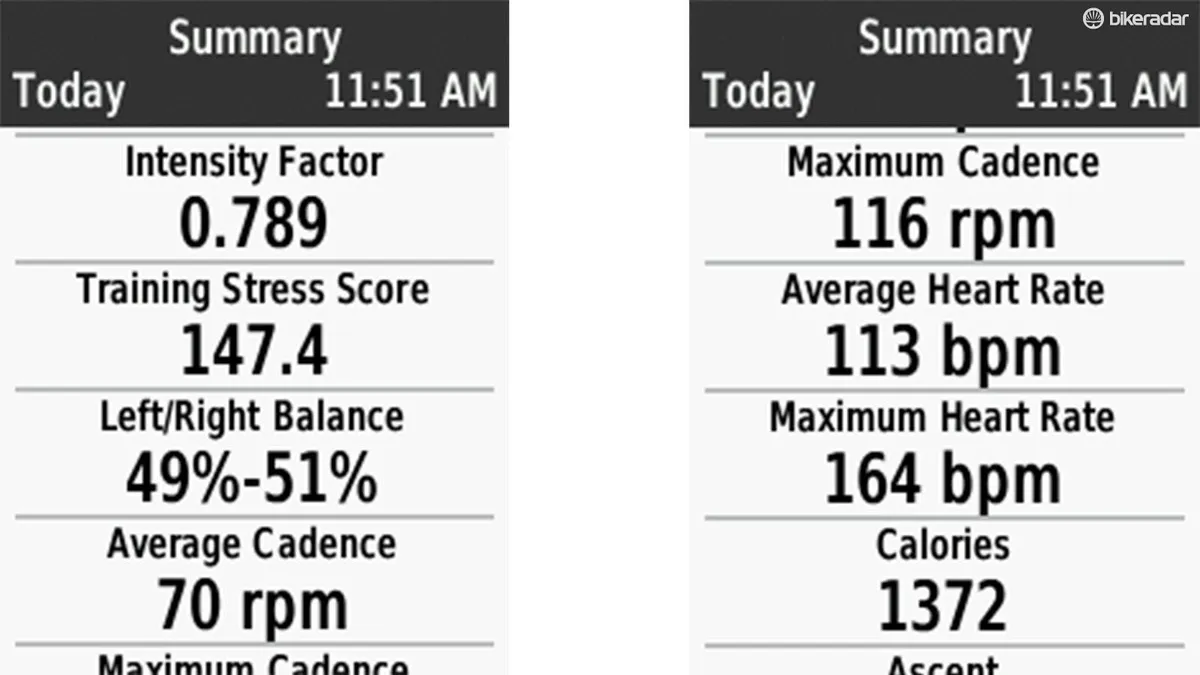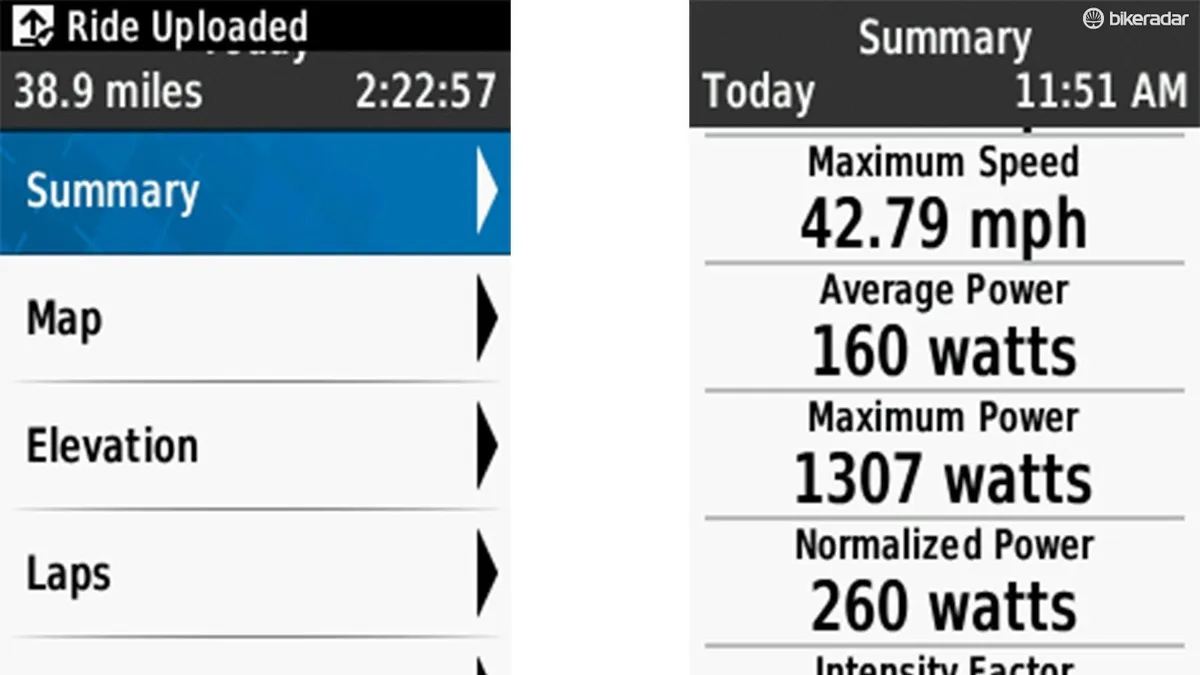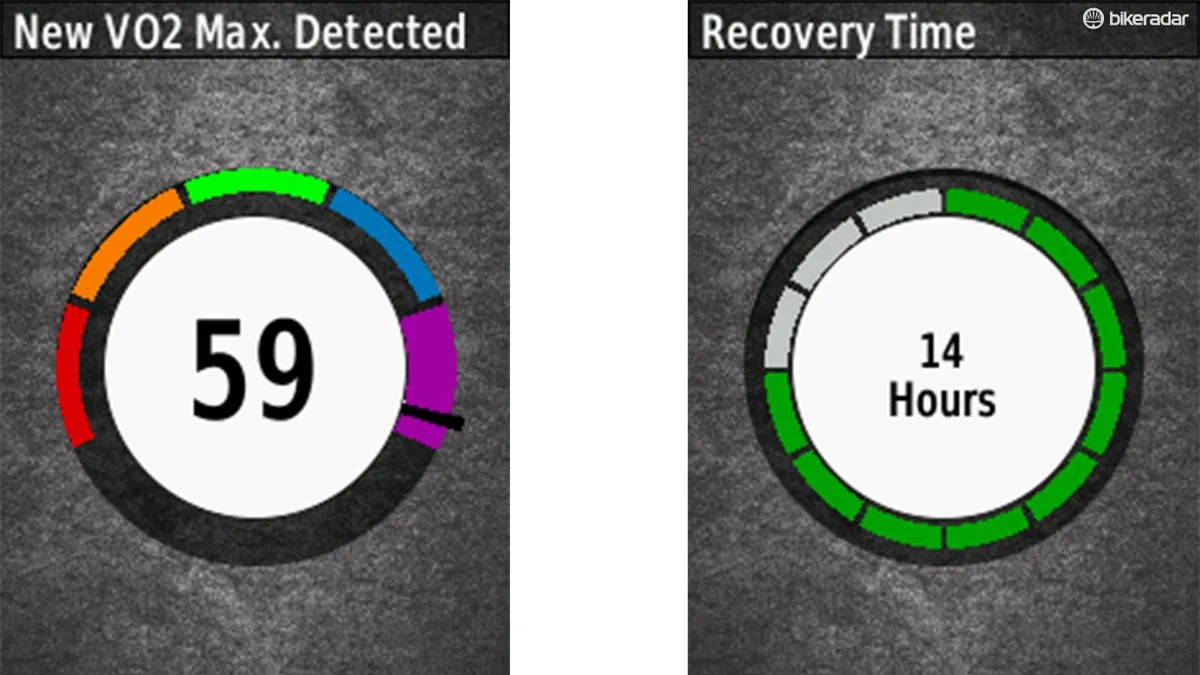If you're a performance-oriented rider who prefers button operation to a touchscreen, you'll like the Garmin Edge 520 GPS computer.
- Garmin Edge bike computers: buyer's guide to all the models
- Garmin Edge 1000 review
- Best GPS devices for cycling
Having established itself as the first name in cycling GPS computers, Garmin now finds itself in the position of determining which feature sets appeal to certain types of riders.
[Editor's note: This review was updated with an improved score after an ANT+ issue was solved. More on that below.]
With the new Garmin Edge 520, the American company has targeted competitive riders with features like Strava Live Segments, FTP testing, Di2 integration, a VO2 Max calculation and recommended recovery time. And yes, the compact unit covers all the standard variations of metrics like distance, speed, elevation and — with the use of a heart-rate strap and a power meter — heart rate and power.
In fact, it’s easier to list what the 520 doesn’t have than what it does. Notably, the 520 has seven buttons, not a touchscreen like the outgoing 510 it replaces. And while a Bluetooth connection to your smartphone can provide automatic wireless uploads if your free Garmin Connect app is open on your tethered smartphone, there is no Wi-Fi like on the Edge 1000.
The Edge 520 sits in the middle of the Edge line, which ranges from the diminutive Edge 20 and Edge 25 units that can perch atop your top cap up through the map-friendly Edge 810 to the smartphone-sized Edge 1000. The 520's screen-to-body-size ratio is better than that of its siblings.
Features included vs features we actually used
Most of us at BikeRadar use a Garmin of some sort, and we all use the standard metrics like distance, speed, ride time and elevation. Garmin’s dual-satellite system of GPS and Glonass is so good that using a sensor for speed and distance is unnecessary for most riders.
Similarly, while elevation won’t be exact, it’s good enough for recreational pursuits. We’re riding bikes here, not targeting missiles.
All these features are available on the much cheaper Edge 20 and 25.
By bumping up to the 520, you get a buffet of metrics. For starters, power can be recorded and analyzed in a variety of ways: real-time, 3sec, 10sec, Normalized, Intensity Factor, TSS, left/right balance and — if you have Garmin Vector pedals — time seated vs time out of the saddle. Many of us ride with power, so the basic capture of data is very useful, whether for metering efforts while riding or analyzing afterwards.
[Updated May 9] In my initial experience of a few months of riding, the 520 would occasionally drop the ANT+ power signal. This didn’t happen often, maybe once every two weeks, but it did occur with different meters and would last for a few seconds. Then, the drops got substantially worse, happening almost rhythmically. After some back and forth with Garmin's lead Edge engineer, we got the problem sorted: removing the BSXinsight Connect IQ app got rid of the worst of the drops, and updating the 520 with the 6.0 software update eliminating the drops entirely. Problem solved.
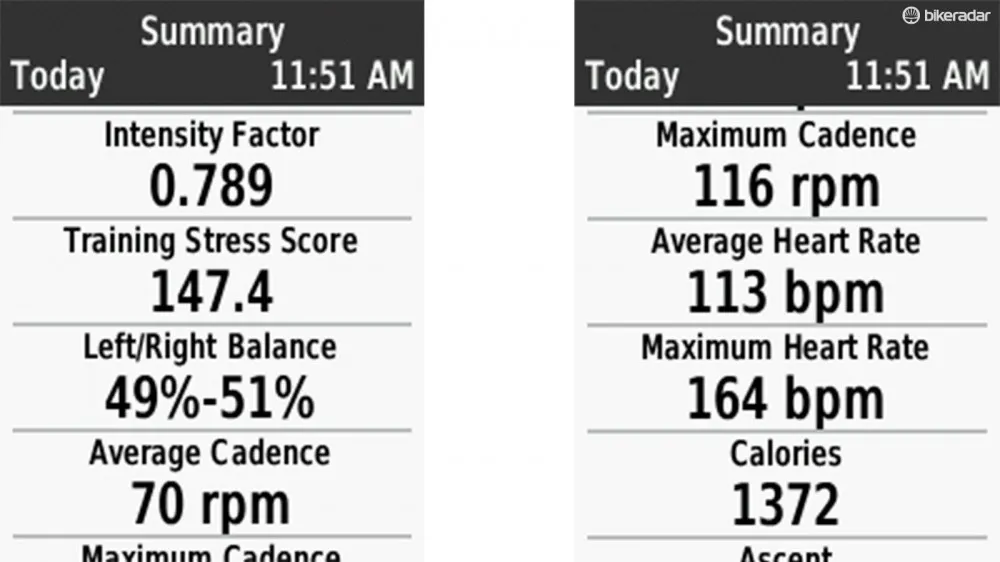
The Strava Live Segments feature represents a huge step forward for Garmin, which for some time protectively guarded against competition from Strava, going so far as discouraging Garmin team riders from having a Strava account instead of a Garmin Connect account.
I didn’t bother to try the Live Segments feature for a few months; I was content to have my rides automatically uploaded to Strava via Garmin Connect. But I was pleasantly surprised when I started using it, both by how easy it is and how my friends’ names and times pop up on my screen. In case you’re new to Earth, Strava is a social fitness site where riders’ GPS files are compared by time over certain stretches of road or trail.
With Live Segments, you can track your progress in real time over Segments that you have starred on Strava, and your Edge 520 will alert you when the Segment is about to start, a relevant best time (yours, someone you follow, or the KOM/QOM), how long the segment is and how you are doing in relation to that best time.
If I had to manually load up Segments to track, I would never bother. But since it’s just a matter of clicking a star or two on Strava, why not?
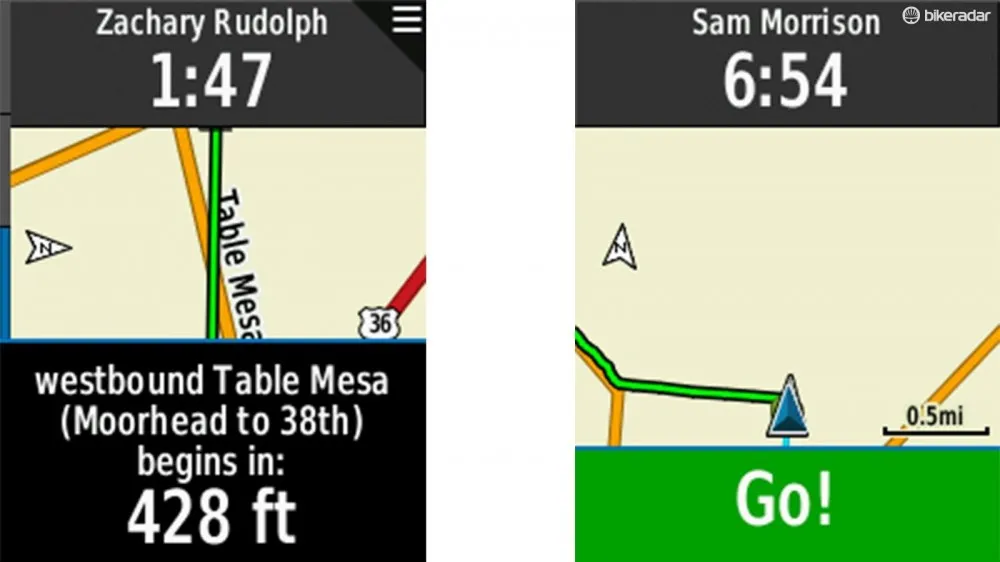
Having your phone tethered to your 520 allows texts and incoming-call info to pop up on your screen. To use this feature, you need to pair the 520 and your phone twice, on both Bluetooth and Bluetooth Low Energy. Your phone should show BT_Edge520 and BLE_Edge520. I made fun of this feature for a while – then came to really appreciate it, especially on cold days when the phone was tucked away under multiple layers. It's nice to know whether that call is your kid's school nurse and you need to answer right away, or some random number you don't recognize that can be ignored until after your ride.
The Edge 520 has a few educated guesstimates, including VO2 Max, Recovery Time and Recovery Level. The first requires a power meter and a heart-rate monitor. It’s a novel feature, but not exactly scientific, as a true VO2 Max test measures maximal oxygen consumption.
On a similar note, after each ride the Edge 520 tells you how many hours of recovery you need, based on your heart rate during the ride. I found these numbers to be roughly accurate; super-easy rides prompt 1hr, while epic races tell you two days.
Still, I don’t think I would make any training decisions based on it. In the first 5-10 minutes of a ride, the unit will tell you how your recovery is. Mine has always said ‘good’. The only time I’ve seen ‘poor’ was when using a Garmin watch, and I started a second activity after doing a 10k full-out. Do you need a Garmin to tell you you’re tired?
There is a very basic map on the Edge 520, but I often found myself riding on blank areas of the map when I was on a large, long-established road. Unlike the Edge 1000 or even Edge 810, this is not a great computer for detailed navigation, although it’s perfectly adequate for following a route you load onto the unit, giving you turn alerts.
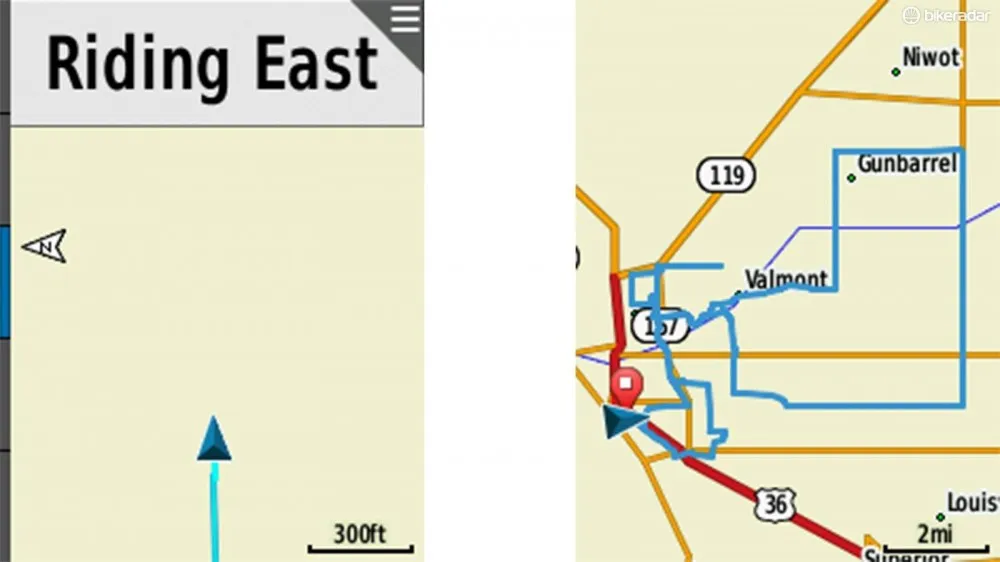
You can also use the Edge 520 with Garmin’s new Varia Radar and Varia Lights, though I haven’t used these enough to give good feedback.
Similarly, the Live Tracking feature lets friends or family members follow your ride in real time. If watching a little dot creep along a digital map on a computer screen is exciting for you, then have at it. We have not found this interesting.
Edge 520 vs Edge 510/500
I’ve bought two Garmin 500s and used them as my primary computer for training and racing. I like the compact size, and it has almost all the features I want — time, power, heart rate, speed, elevation, distance and of course a GPS record.
Because it only has GPS, the 500 can sometimes take forever to find a satellite signal when you start it up. The 520’s GPS + Glonass blows this away.
Another feature I wish the 500 had is automatic uploads, ideally via Wi-Fi, like the 1000, or at least by Bluetooth via your phone, like the 520.
The 500 has four buttons, so initial setup requires a whole lot of beep, beep, beeping, but daily use is easy, winter gloves and all. Unlike the 520, though, the 500’s buttons are on the sides, so you can snug the unit up against your stem with an out-front mount. With two of the 520’s buttons on the front, you have to leave yourself more room.

Since this was discontinued, you can get a great deal on the 500 if you can find it.
The 510, as you would imagine, sits in between the 500 and 520 feature-wise, but it has a touchscreen. It has also been discontinued by Garmin, but you can still find a few out there.
Edge 520 vs Edge 20/25
If talk of Strava and power meters bores you, then the 20 or 25 are two great compact units with good functionality. Neither have the deep list of features of the 520, but if simplicity is appealing, check them out.
Edge 520 vs 1000
If you are lucky enough to often ride in new places, then you should take a look at the 1000 for its superior mapping and navigation capabilities. It does everything the 520 does, but comes with a much bigger screen, much better mapping and much more navigation options, including searching for destinations on the fly. While a behemoth in size for everyday training use, I’ve depended on this in foreign lands with great results.
Edge 520 vs other companies’ computers
The white-bodied bike GPS units of Mio (if you're in the UK) / Magellan (in the US and Australia) are inching closer to being direct Garmin competitors. The Cyclo 505 ($499) has good maps for road and trail and can even show bike shops in addition to other points of interest. It is set up for ANT+/Bluetooth connectivity, wireless uploads, Di2 graphic displays and quirky features like 'Surprise Me' that makes up routes for you to follow.
The Wahoo Elemnt Bolt is most similar to the Edge 520, with a cool zoom feature on all pages, allowing you to see more or less data in the configurations of your choice, which are executed easily via a paired smartphone. With automatic uploads via Wi-Fi or Bluetooth plus automatic populating of your Strava routes on the unit, the Elemnt Bolt is a modern GPS cycling computer.
PowerTap’s Joule GPS+ computer ($249) covers all the training-metric and workout options, and has wireless download via Bluetooth (to PowerTap Mobile and, if synced, Strava), but the navigation is more primitive.
Polar has a few GPS computers that could be a good option for performance-minded cyclists, but there is a big catch: they are Bluetooth-only, not ANT+. Most power meters and heart-rate straps are ANT+. So, if you have a BT meter like a Stages, it’s worth checking out. If not, this might not be for you. The V650 ($249) has color navigation on OpenStreetMap maps, plus an integrated front LED.
Tool-company Lezyne now has GPS computers. The Super GPS ($199) is ANT+/Bluetooth for pairing to peripherals and smartphones. It has four buttons and GPS/Glonass reception. The GPS functionality is used for distance and speed only (and recording your ride’s route), not for navigation. While priced well, the Super GPS' functionality is well short of the 520.
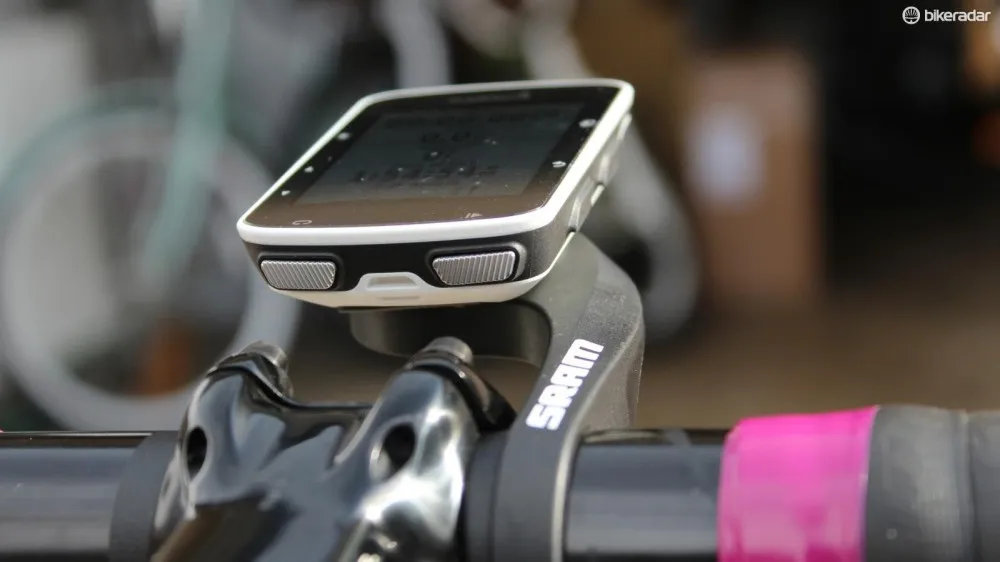
Bottom line
For riders more interested in training data than detailed mapping, then the Garmin Edge 520 is a very good option with robust battery life and a high screen-to-total-size ratio for the compact unit. Using buttons over a touchscreen may seem like a step backwards, but I generally appreciated the format, especially when riding with thick gloves or rain-soaked or sweaty hands. My only real complaint is the lower-front placement of the start/stop and lap buttons and the absence of Wi-Fi. All in all, it's the best GPS cycling computer on the market for performance-minded riders.
